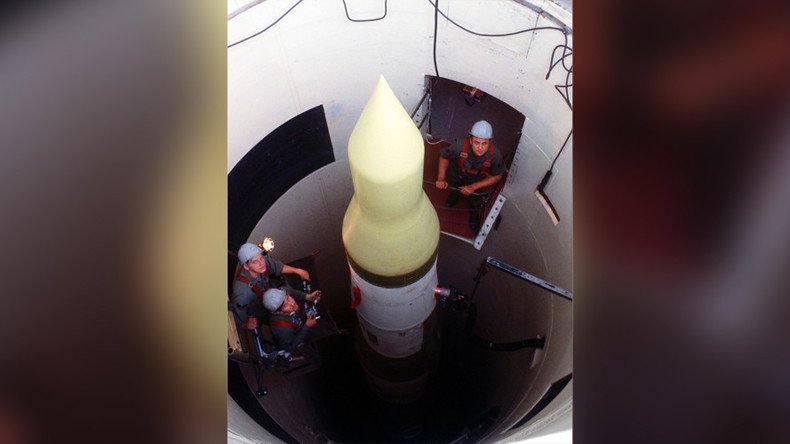Development of new American ICBM delayed over insufficient funding concerns – report

The Pentagon has reportedly expressed concern over the price of a yet-to-be developed new silo-based strategic nuclear missile Ground Based Strategic Deterrent (GBSD). The Minuteman III missiles currently operated by the US Air Force are about 40 years old.
The GBSD program supervised by the US Air Force aims at the development, production and deployment of 400 new ICBMs called to replace the outdated LGM-30G Minuteman III ground based ballistic missiles.
America’s largest defense industry giants Boeing Co., Lockheed Martin Corp. and Northrop Grumman Corp. are all competing to be awarded the new lucrative ICBM contract.
However, the meeting of the Pentagon’s Defense Acquisition Board on August 3 exposed a substantial multibillion dollar gap between the estimates presented to the board by Air Force service and Pentagon’s office of independent cost assessment, a defense official familiar with the matter told Bloomberg, citing an unidentified US defense official familiar with the internal debate.
‘Anti-nuclear’ Obama plans to spend $1 trillion on nukes http://t.co/shcE0TrpVPpic.twitter.com/qkodWtE2Vs
— RT America (@RT_America) September 22, 2014
According to the Air Force’s moderate 2015 estimates, the development of the new ICBM program would reportedly cost $62.3 billion for all stages combined, including the development and production of related infrastructure, command and control systems and operational commissioning.
The Pentagon is well aware that the US has not developed or built new nuclear-capable ICBMs for decades, which implies that unexpected technical issues might emerge. So the military department has reportedly voiced concerns that cost considerations of the GBSD program are incomplete and should be reconsidered.
“If there was something that we learned” from the Defense Acquisition Board meeting it is “the magnitude of this type of ICBM work,” Air Force Secretary Deborah James said during a “State of the Air Force” news conference last week. “There is a level of complexity that has to be worked through.”
New deterrence: US plans to upgrade its nuclear bombhttps://t.co/6pCQsYXauvpic.twitter.com/T19jSUcQ1T
— RT America (@RT_America) August 2, 2016
The US Department of Defense is seemingly reluctant to initiate a program with insufficient funds that would inevitably pose a problem in terms of the need to seek additional funding through Congress of by shifting funds from other Pentagon programs.
The debate largely surrounds the methods of calculating the program’s cost, either making it on the basis of old missile development programs of the 1960s, or evaluating the costs according to the latest estimates readied by Pentagon’s cost analysts, Bloomberg’s source said.
The Pentagon may reportedly give the green light for the GBSD program, if the Air Force reconciles the differences between their cost estimate and that of independent experts, and expresses readiness to be able to take the program past 2021, taking into consideration various estimates of inflation etc.
The Air Force is now considering whether it will be able to back up the ICBM program financially in case extra money is needed, the source told Bloomberg. This means it would have to agree to the higher forecast or put the GBSD program on hold, because the Pentagon is unlikely to allow the Air Force to underfund it.
“We’re working that through,” Air Force Secretary said.
The Obama administration’s plan to modernize all of the US nuclear weapons arsenal, is expected to cost around $355 billion by 2023. However, critics say this figure could rise to over $1 trillion.
The replacement of America’s only remaining silo-based LGM-30G Minuteman III ground based ballistic missiles is long overdue.
READ MORE: Slush funds, secrets and splurges: How Pentagon budgets keep getting bigger
Developed in late 1960s, Minuteman III was first deployed in 1970. Production of Minuteman III missiles was discontinued in 1978. At the time, each missile cost $7,000,000.
The existing missiles have been repeatedly upgraded technically and electronically, yet in two years’ time the newest of the remaining 450 Minuteman III missiles will turn 40 years old.
Still, the USAF reportedly expects the Minuteman III remain operable until 2030, when all of the existing LGM-30G missiles will be over half-century old.












